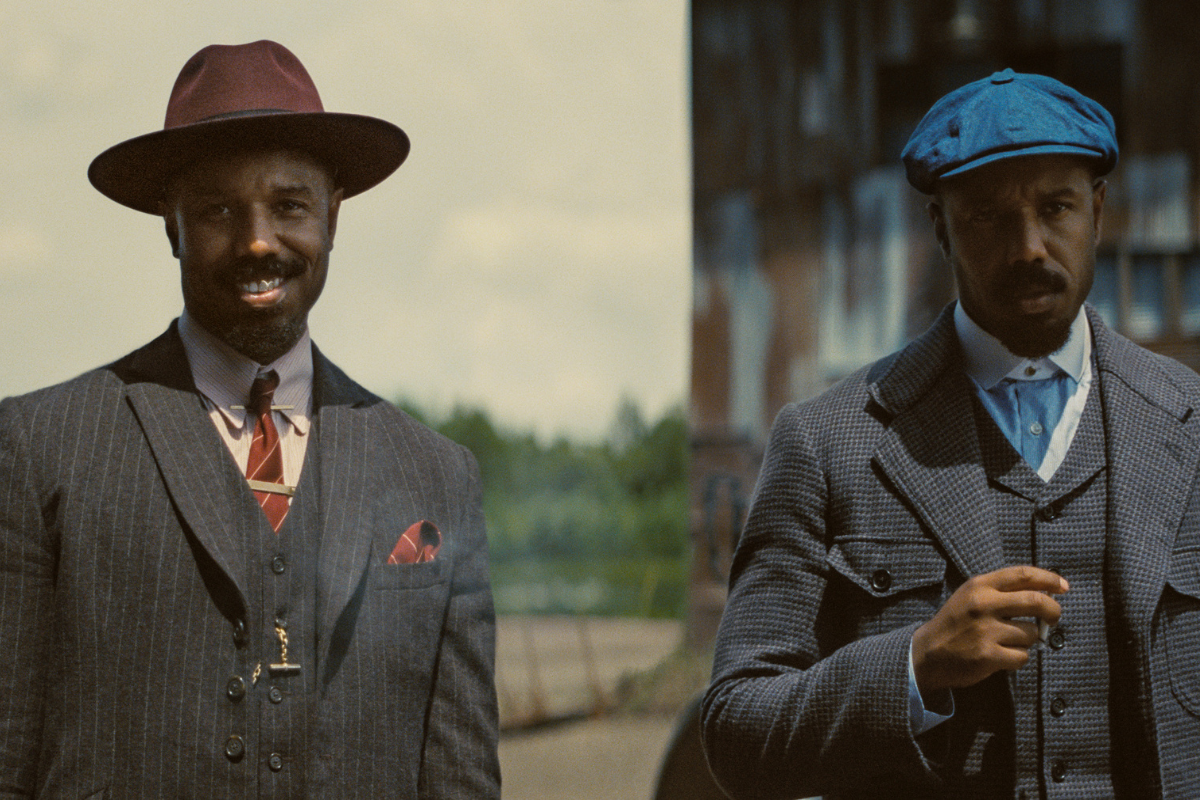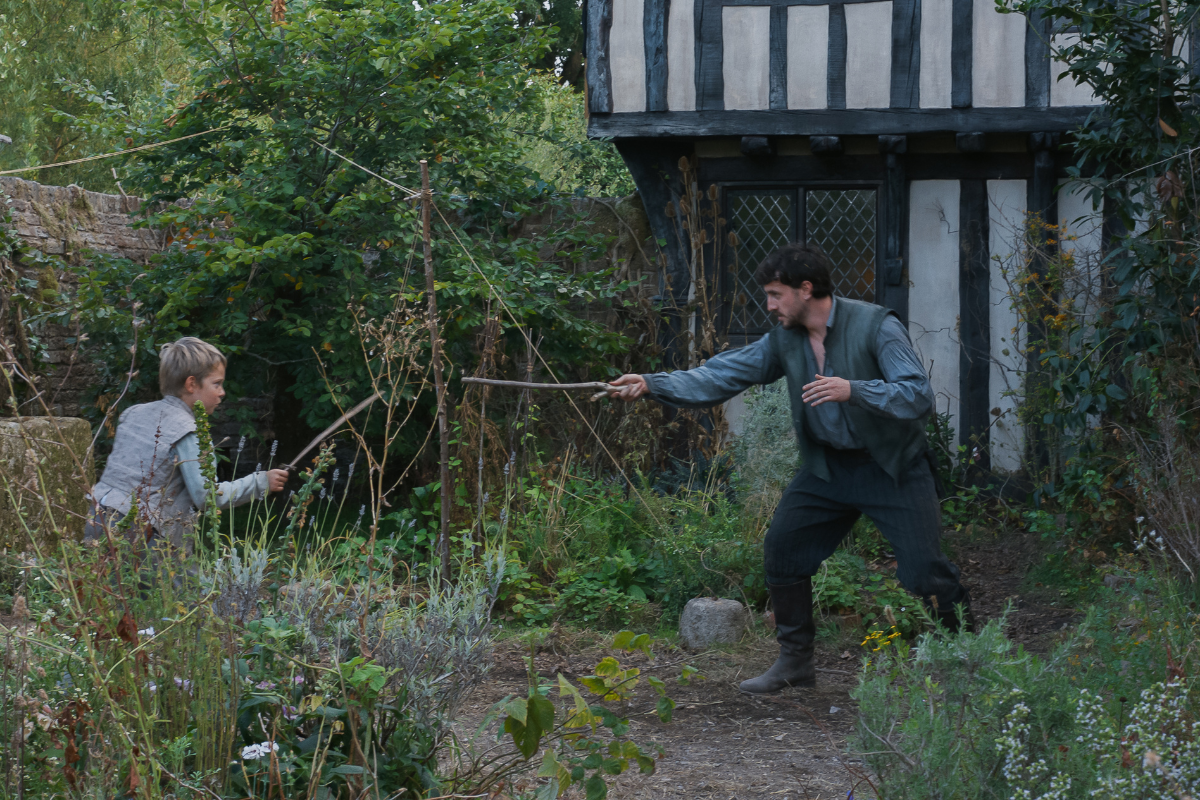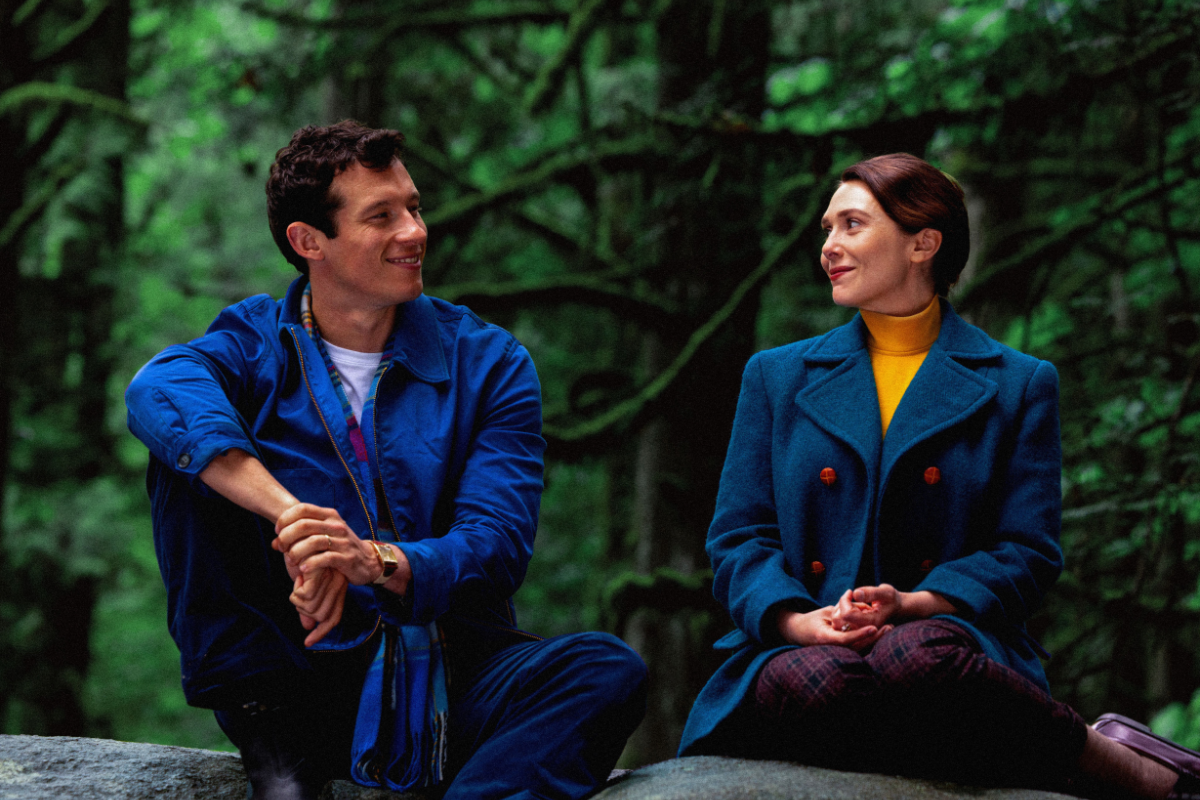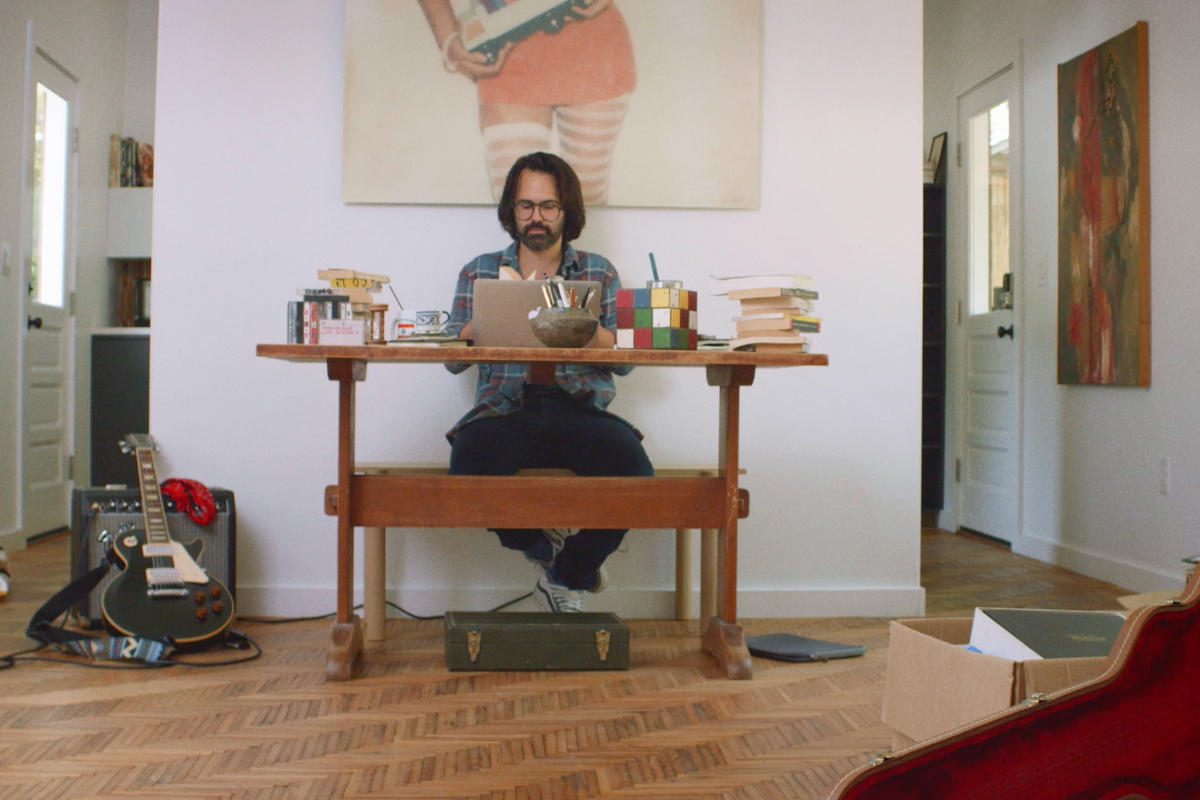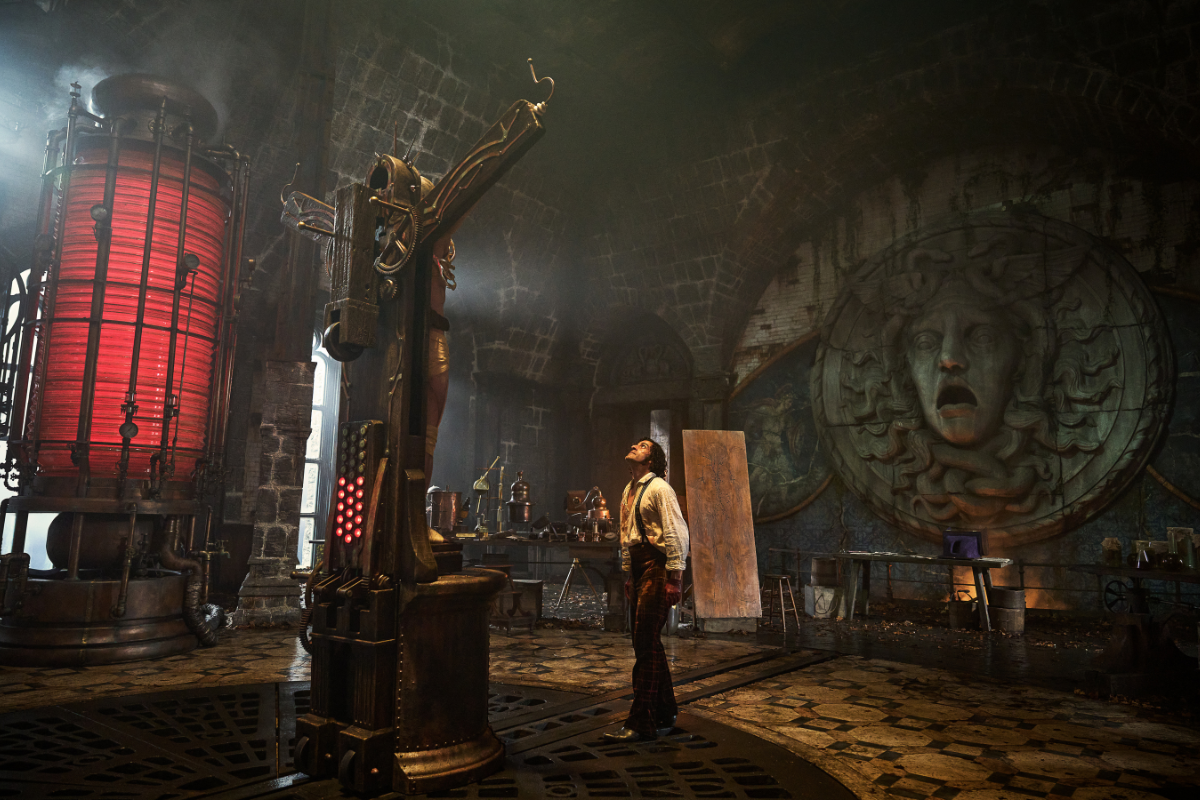Qi Cheng Zhuan Jie (起承轉結): The Chinese Four-Act Screenplay Structure, Part 2
Dimitri Vorontzov continues his analysis of how the Chinese four-act screenplay structure is employed in the contemporary Chinese cinema, and also how it made its way to Hollywood and was successfully used in a famous American blockbuster that astonished worldwide audiences with its originality and became the cornerstone of one of the most illustrious creative careers in the entire history of cinema.
In the first part of this article we reviewed the basics of the Chinese four-act screenplay structure, Qi Cheng Zhuan Jie, and observed how it was used in a classic Chinese film Waves Washing the Sand.
In today’s article, I’ll show you how the same structure is employed in the contemporary Chinese cinema, and also how it made its way to Hollywood and was successfully used in a famous American blockbuster that astonished worldwide audiences with its originality and became the cornerstone of one of the most illustrious creative careers in the entire history of cinema.
Which movie?
You’ll find out from this article, so keep on reading!
Supporting Evidence
I hope in the first article in the series I gave you a good initial understanding of the Chinese four-act screenplay structure, known as Qi Cheng Zhuang Jie.
You can find hundreds of examples of this structure in Chinese, Hong Kong, and Taiwanese movies, throughout history. It also made its way to Korea and Japan, and a great number of films from these countries are based on a variation of the Chinese four-act structure!
But let’s solidify our understanding by taking a quick look at one of the relatively recent examples.
A gritty Chinese revenge thriller People Mountain, People Sea (人山人海 – 2011, written by Gu Xiaobai and directed by Cai Shangjun) is a quintessential tale of a flawed hero seeking redemption. The title of the movie is a loose Chinese equivalent of the English phrase “looking for a needle in a haystack.”
Act 1: Qi - Setup
Introduction of the key characters, the conflict, the moral problem and the world of the story.
The protagonist of this film – an impoverished villager named Tie – is a man living without purpose. Some years ago he caused an accident that cost several people their health, and he’s still paying off losses incurred by their families. Filled with remorse, he spends most of his time sleeping it off.
One day Tie receives tragic news: His kid brother was stabbed to death.
The murderer is identified as Xiao Qiang, a recidivist robber, recently released from prison. He killed Tie’s brother to steal his motorcycle – and fled from justice.
Tie meets Xiao Qiang’s elderly mother, wife and teenage son, spends some time with them, helping with daily chores – and then sets out to find the murderer.
Act 2: Cheng – Development
Contrast, relationships and emotions, retrospection, and expanding the argument with new moral perspectives.
In search of Xiao Qiang, Tie travels from his tiny village to Chongqing – the largest city in the world.
In the city, Tie meets Bao, his former migrant worker buddy, a drug addict who suffers from internal bleeding because he was recently arrested, and swallowed a razor blade to scare the cops into letting him go. Together, they scour the slums, looking for the murderer Xiao Qiang, get into an altercation with a local gang, and have to buy their way out. Realizing that Tie has some savings, Bao betrays him, and, helped by a corrupt policeman, steals Tie’s money. Tie tracks down the crooked cop and smashes a bottle over his head. But the former friend Bao is gone, and so is the money.
On the run from the police, Tie travels to Shuangxichuan and meets Tianxin, his former girlfriend who bore his son. The ex-girlfriend hates Tie, and he and the boy communicate by smacking each other upside the head.
At Tianxin's insistence, Tie takes his son to a remote village to live with his aunt, because neither he nor the mother want anything to do with the boy. When the son refuses to walk to his aunt’s house, the father grabs him and, without saying a word, hurls him into a nearby shallow pond. Covered in mud, the boy crawls out of a pond and trudges away, without looking back at his unloving parents.
Act 3: Zhuang – Redirection
Maximum contrast, new location unlike anything seen before, complete moral re-evaluation, true essence of the story revealed, similarity of protagonist and antagonist emphasized, new greater conflict, and everything else was merely a lead-in to this.
Having failed to track down the murderer and to connect to people from his past, Tie returns to his home village – but he can’t sleep at night: The outrage over his brother's murder is eating Tie alive from the inside.
One day Tie learns that the murderer, Xiao Qiang, found refuge in an illegal private coal mine in Shanxi. Tie threatens a random motorcyclist on a road, steals his motorcycle, rides to Shanxi and enlists to work in the mine.
There, Tie finally finds Xiao Qiang – but he can’t get close enough to him to attack. Moreover, the infernal working conditions turn the two former enemies into fellow sufferers!
Only the most desperate men end up working here. Guarded by armed slave masters, they are never allowed to leave the mining camp, doomed to toil in darkness without pay, until they die of overwork, starvation or as a result of some accident. Hard labor and darkness drives the miners insane. Random unprovoked violence erupts every day. It’s the ultimate terror of human condition, hell on earth.
The murderer, Xiao Qiang, decides to set himself free. He smuggles a match into the mine, and tries to strike it, which can ignite methane and coal dust, and cause an explosion. Seeing that, several other laborers attack Xiao Qiang and bludgeon him to death.
Tie acknowledges his grudging respect and admiration to his former enemy. He’s now seen with his own eyes much worse villains than even his brother’s murderer. The story got redirected!!
The slave masters publicly execute Xiao Qiang’s killers, as a warning for others. Outraged by this new injustice, Tie finally discovers his true purpose.
Act 4: Jie – Conclusion
A new element serving as a moral catalyst, a final test, and the previous thematic elements connecting in a new way.
In the barracks in the middle of the night, Tie sneaks up to a sleeping teenage laborer named Xiaozi – who is like a son to him in this grim new reality – and hits the boy with a metal pipe, breaking his arm.
This sudden act of senseless cruelty toward the helpless boy appears to reveal Tie’s moral collapse. However, this is meant to be an act of mercy.
Tie swallows a cigarette lighter to smuggle it into the shaft, and ignites it underground, setting off a massive explosion that obliterates the illegal mine along with its slave masters and all the laborers, including himself.
Tie sacrifices his life in order to free the slaves through death, and rids the world of this evil place.
The only person to survive the explosion is Xiaozi, the teenage boy who stayed in the barracks because his arm was broken by Tie the night before.
* * *
Do you see how this story is based on the exact same story pattern as Waves Washing the Sand, described in our first article?
The desert island is replaced with the illegal mine, but “the grudging respect to the former enemy” is here, and so are many other structural elements.
Chinese Four-Act Structure in Hollywood
Remember I promised you an example of a great American blockbuster based on Chinese four-act structure? Now is the best time for it!
This great film earned hundreds of millions of dollars in the box office – twenty five times its budget! It won dozens of awards, including an Oscar and Palme d’Or, catapulted several actors into superstardom, and was selected for preservation in the United States National Film Registry by the Library of Congress as "culturally, historically, or aesthetically significant".
It made its writer-director a household name in America and the world.
That blockbuster is, of course, Pulp Fiction (1994, written and directed by Quentin Tarantino).
Surprised? You shouldn’t be! Quentin Tarantino made no secret of his being influenced by Asian cinema. Around the time Tarantino produced and marketed Pulp Fiction, he was mentioning such Hong Kong auteurs as Wong Kar-Wai, Ringo Lam, and John Woo among his biggest idols in almost every interview.
But even if we haven’t read or watched any of Quentin Tarantino’s old interviews, his movie structure speaks for itself.
When Pulp Fiction premiered in 1994, that structure was considered nothing short of revolutionary – and it was, in how it blended the nonlinear narrative of the classic Hollywood hard-boiled gangster films with the Chinese four-act story model.
Let’s see how Quentin Tarantino did it!
Act 1: Qi - Setup
Introduction of the key characters, the conflict, the moral problem and the world of the story.
Two small-time crooks, Pumpkin and Honey Bunny, decide to hold up a diner (note that this is a framing device, identical to how the sun-bleached handcuffed skeletons frame the story in Waves Washing the Sea) – but after the opening credits, the story shifts to a couple of bona-fide gangsters, Vincent Vega and Jules Winnfield.
On their way to a hit job, Vincent and Jules chat about burgers, argue about foot massage, and gossip about their badass gangster boss Marcellus Wallace, whose wife Vincent later must take out for a night on the town at the boss’s request.
They proceed to shoot up Brett and all his buddies, with the exception of Marvin, who led them to Brett – and then return to Marcellus’s bar with a mysterious briefcase that shines from the inside.
In the bar, the big boss Marcellus Wallace is persuading a minor character – a pro boxer Butch Coolidge – to take a dive in the upcoming match. Butch agrees – but then the arriving Vincent insults him in passing, and Butch begins to reconsider his decision to lose the match. Butch watches Marcellus embrace the man who just humiliated him, and realizes that more than his pride is at stake: He just sold his soul.
A classic first act: The key characters and their relationships are established, the chess pieces are in place, and the main conflict of the story is triggered.
Act 2: Cheng – Development
Contrast, relationships and emotions, retrospection, and expanding the argument with new moral perspectives.
Vincent buys heroin from his drug dealer Lance, and shoots it up.
Still high from the drug, he shows up to pick up Mia Wallace for a night on the town, and the two of them go out together, chat, flirt, take part in the twist dancing contest, steal the contest’s trophy, and nearly end up as lovers, except Mia accidently discovers Vincent’s heroin, mistakes it for cocaine, snorts it, and goes into cardiac arrest.
Vincent rushes the unconscious Mia to Lance’s house, where he miraculously resurrects her via the adrenaline shot to the heart.
Before bidding farewell to Vincent, Mia tells him a silly joke.
You’d probably agree that this segment of the story is a perfect example of the “Cheng” act in the Chinese story structure. From the pragmatic standpoint, it may seem unnecessary. There’s no “main story goal’ being pursued here, just a couple of people having fun and doing dumb stuff.
Rather than propelling the story forward toward maximum conflict between the two characters already established as enemies – Vincent and Butch – the story takes an emotional detour via a side road, and explores the character of Vincent Vega, building up tension about what may happen if he ends up sleeping with – or worse, causing the death of – the wife of the monstrous Marcellus Wallace.
This act reiterates the points made in the first act, repeats some of the elements introduced earlier, and illustrates them with new examples. It appeals to the emotional side of the audience – just like its counterparts from Waves Washing the Sand and People Mountain, People Sea, it grabs you by the heart – or rather, in this case, it stabs you in the heart with the adrenaline needle!
It serves no other purpose than to deepen the audience’s empathy with the protagonist. In the first act, Vincent Vega has been established as a murderer – and a bit of an asshole, really. So, if we are to connect with him, we really need to see him as human, relatable, even heroic – and also sweet and vulnerable, in his own dopey way.
This is achieved – just as it’s always the case in the “Chang” act – through the emotionally rich relationship of the protagonist with a new character – and through heightened tension in the “adrenaline shot revival” sequence.
Act 3: Zhuang – Redirection
Maximum contrast, new location unlike anything seen before, protagonist switch, complete moral re-evaluation, true essence of the story revealed, similarity of protagonist and antagonist emphasized, new greater conflict, and everything else was merely a lead-in to this.
Here, the story shifts to a radically different perspective, just as it should in any self-respecting “Zhuang” act of the four-act Chinese screenplay structure.
Suddenly, our protagonist is no longer Vincent Vega. It’s Butch Coolidge, the failed boxer that appeared only episodically in the first act!
In his dream before a boxing match, Butch recalls the satirically patriotic story of the golden watch, as told to him by Captain Koons – and then, instead of “taking a dive”, as was agreed with Marcellus Wallace, he defeats his opponent on the ring… and accidentally kills him.
Butch wins a small fortune but he’s now in trouble with the gangsters: Marcellus Wallace is enraged, and his henchmen, including Vincent Vega, are out on a prowl, seeking retaliation. That’s not a big problem though, because all Butch needs to do now is meet his girlfriend Fabiene, and travel to some exotic locale where they will speak Spanish for the rest of their lives.
And yet, Butch must go back and retrieve the golden watch from his place, where he discovers the former protagonist, currently the antagonist, Vincent Vega… and accidentally kills him (just like he did earlier to his boxing opponent).
Then, the golden watch safely on his wrist, on the way back, Butch accidentally bumps into the super-antagonist Marcellus Wallace, and after a shootout and a fistfight, both the protagonist and the super-antagonist accidentally break into a pawnshop and get captured by a group of super-super-antagonists – the surreal trio of Becketesque evil clowns: Maynard, Zed, and The Gimp.
You notice by now that the motif of things happening accidentally begins in the second act of Pulp Fiction and grows in prominence throughout the third act. Of course, if you’ve seen “Pulp Fiction”, you already know that it will play an even more prominent role in the final act.
Here I want to “jump the gun” a little bit, and tell you that in Chinese screenwriting – and in the Chinese literary tradition in general – such apparent accidents represent one of the crucial narrative techniques. Remember how prominently they were featured in Waves Washing the Sand? This is because, for the traditional Chinese mind, these are not accidents, random coincidences – but “everyday miracles”, way stations on the path of Destiny. To a Chinese writer, nothing is accidental, and therefore, random coincidences are not just allowed in a screenplay: They are welcomed, embraced, recognized as a legitimate aspect of the realistic literary tradition, and skillfully incorporated in virtually every story.
(In one of the future articles in this series, we will look at the Chinese art of dramatic coincidence in much more detail - but now let’s continue our progress through the world of Pulp Fiction!)
Captive in Maynard’s basement, the two former enemies, Butch and Marcellus, are now just fellow sufferers… and if that sounds familiar, it’s because exactly the same thing happened to Ah Long and Liao Zhang on the desert island in Waves Washing the Sand, and the same thing also happened to Tie and Xiao Qiang in People Mountain, People Sea!
The story got redirected, and now the people who were previously locked in lethal conflict, find themselves on the same side, against a terrible common opponent.
Butch knocks out The Gimp, and has a perfect opportunity to escape – but, moved by his compassion to the suffering of Marcellus Wallace (there it is, the familiar pattern again) – he comes back, swinging a katana, and frees his former arch-enemy.
The two men. Marcellus stays in the basement to torture Zed, and Butch leaves, picks up Fabiene, and together they ride Zed’s chopper into the sunset. And that’s how the movie would end, if it were based on anything even remotely resembling the Hollywood three-act structure.
However, the Chinese four-act structure demands that we have one more act, reincorporating some of the earlier material… and of course you already know that’s exactly what happens next in Pulp Fiction!
Act 4: Jie – Conclusion
A new element serving as a moral catalyst, a final test, and the previous thematic elements connecting in a new way.
Days earlier, back in Brett’s apartment, one of Brett's buddies suddenly emerges from a bathroom and empties his gun into Vincent and Jules – but misses every shot, and gets promptly obliterated by the duo. Jules believes their survival is a miracle, while Vincent insists it’s an accident.
Minutes later, also by an apparent accident, Vincent’s gun fires and kills Marvin.
Not only we’re back in time and location of the first act, but the notion of “accidents vs miracles” is not new in this story: it’s been already introduced in the second act, when Mia Wallace accidentally overdosed and Vincent “resurrected” her, and later in third act, filled with accidents and miracles.
In other words, this is exactly the way earlier thematic elements are supposed to be reintroduced in the properly designed fourth act of the Chinese screenplay structure!
Vincent and Jules hide in the house of Jules’ friend Jimmie, and Marcellus Wallace sends his fixer, Winston Wolf, who helps the two thugs get rid of Marvin’s body, and teaches them a lesson in maturity and professionalism.
Wiston Wolf acts as a new moral catalyst, and perhaps thanks to his input, later at a diner, Jules announces to Vincent his decision to retire from the life of crime.
His newly discovered spirituality is immediately put to a test: As it turns out, Pumpkin and Honey Boney – the two small-time crooks from the opening sequence – hold up this very diner! Jules, handling the situation in sync with Vincent, passes the test with flying colors: rather than killing the would-be robbers on the spot, he morally overpowers them, and lets them take his money and walk away.
The transformed Jules and the doomed Vincent then leave the diner with their magical briefcase.
* * *
I hope I’ve made a solid argument showcasing Pulp Fiction as a perfect American example of the Qi Cheng Zhuang Jie story model.
Considering this film’s overwhelming success in the United States and worldwide, clearly, there’s something to be said for mastering the Chinese four-act screenplay structure!
The truth of the matter is, Hollywood three-act structure and its Chinese four-act counterpart both offer distinct advantages to screenwriters who use them.
Hollywood three-act structure is tightly packed with action, tension and information. It’s compact, dynamic, athletic, lean, “all muscle,” “all business,” no redundancies. If you want to dominate the audience, hold it firmly in your storyteller’s grip, keep your viewers breathless and on the edge of their seats the entire time, and control their responses – that’s the type of structure you probably want to use – even if you write a screenplay for the Chinese movie market!
By comparison, Chinese “Qi Cheng Zhuan Jie” four-act structure is more relaxed, playful, generous with its time, loose in its plotting, it offers more room to breathe, more freedom for the storyteller and the audience. It allows for greater emotional range and deeper exploration of the relationships between characters. Compared to the Hollywood standard, it feels lighter, clearer, “jazzier,” more improvisational, less constrained and – well, less structured!
It’s “your screenplay on vacation”!
In a Chinese four-act script, fewer things may happen within a given unit of time, but these things have potential for greater allure and deeper sentiment.
Chinese four-act structure is “more considerate” toward its audience: With that type of structure, you don’t reign over your spectators like a tyrant, but let them “roam freely” in the vast galleries of your story and select their own things to enjoy. This structure has plenty of room for details to be noticed only on second or third viewing. If you want to charm your audience and let it “chill” and enjoy a thrilling, spontaneous, unpredictable ride, Qi Cheng Zhuan Jie structure might be your best bet – even if you write for the mainstream American moviegoers!
Quentin Tarantino, to the best of my knowledge, never talked about Chinese four-act story structure, or mentioned the proper Chinese names of its four acts. In fact, being rather an intuitive storyteller who discovers his story through “reconnaissance writing,” he may even be blissfully unaware of exactly what kind of structure he used in Pulp Fiction!
But that was not the first time he used it.
Pulp Fiction inherited its Qi Cheng Zhuang Jie paradigm almost precisely from Quentin Tarantino’s 1992 debut feature film Reservoir Dogs, which, in turn, borrowed and creatively reinterpreted the same four-act structure from Ringo Lam’s 1987 Hong Kong movie Dragon, Tiger, Wind and Cloud (龍虎風雲), known in the U.S. home video market as City on Fire.
To avoid redundancy, I’m not going to dwell on either of these two movies – but I encourage you to watch them both, and compare their structures with the examples we reviewed in this article.
You’ll be pleased to recognize the obligatory structural elements of Qi Cheng Zhuang Jie in both films.
You’ll probably also notice that the two movies treat their four-act structure slightly differently (and so do Pulp Fiction, People Mountain, People Sea and Waves Washing the Sand) – because that structure allows for a few spectacularly diverse variants!
I hope to discuss with you these variants – and their derivatives – in one of my subsequent articles in the “Screenwriting Kung Fu” series – and in the process, we’ll explore the movies by some of the most brilliant, and still largely unknown in the west, contemporary Chinese filmmakers.
We’ll also make forays into the wider Asian film market, and find out how the millennia-long Chinese (Confucian) cultural and literary tradition influences Japanese and Korean screenwriting today (similarly to how sophisticated and diverse Chinese kung fu became the basis of such wide-ranging martial arts styles as Japanese karate and Korean taekwondo).
I will also show you how we can use unique Chinese screenwriting techniques to deal with the dilemma of “outlining or not outlining” our movie scripts.
Among many other examples, I will tell you how a modified, five-act version of Qi Cheng Zhuang Jie structure served as a foundation for a tremendously successful international blockbuster.
Which blockbuster?
You’ll find that out from the next article in our “Screenwriting Kung Fu” series!
Learn more about story structure in our SU online course, The Fundamentals of Screenwriting: Give your Script a Solid Foundation
Dimitri Vorontzov is a scholar of storytelling, with primary focus on stories for film and television. Educated as a composer, pianist, symphony conductor and a film director, Vorontzov trains screenwriters, conducts screenwriting contests, helps established writers and producers with screenplay rewrites and film/TV project development, and leads a worldwide community "Superstar Screenwriters", uniting tens of thousands of people passionate about screenwriting and filmmaking, who live everywhere on the planet: From the US to Japan and from Kenya to Nepal. Free screenwriting resources available on his website.


